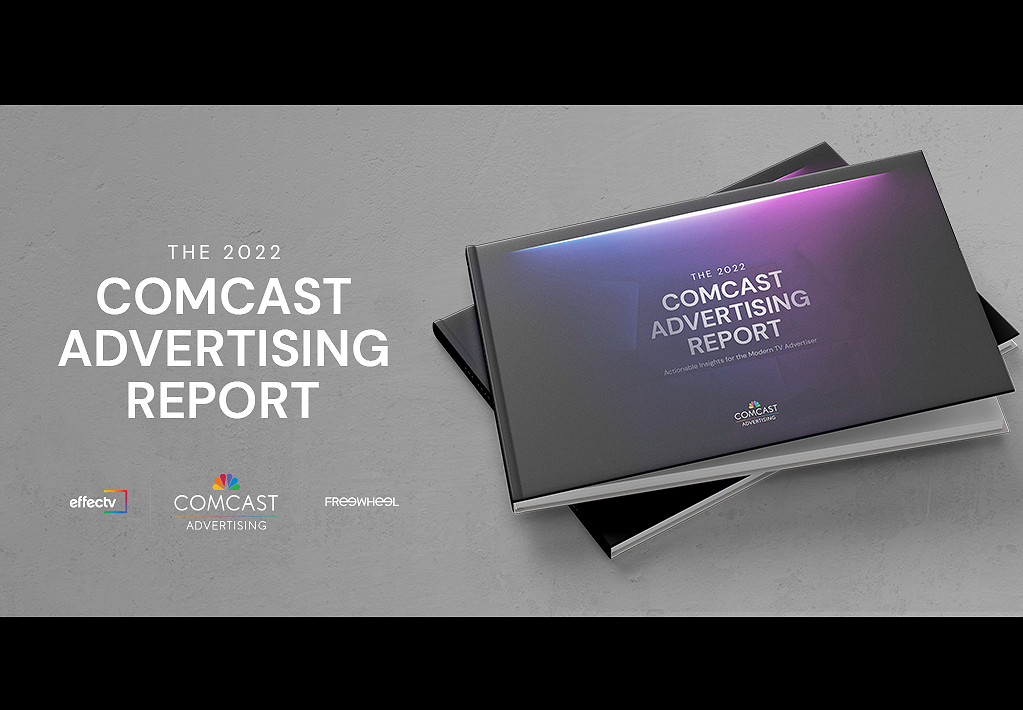It's not just television viewing habits that are changing. The ways that buyers and sellers are doing their work is undergoing a transformation as well. But in exactly what ways? Look no further than the 2022 Comcast Advertising Report: Actionable Insights for the Modern TV Advertiser, for a wealth of information on those fronts.
Comcast Advertising's motivation for commissioning the report is clear. The company sits in the middle of an increasingly complex ecosystem, with FreeWheel as its advertising technology platform and Effectv as its advertising sales division. The report is packed with data and actionable insights. Here are eight takeaways to consider:
Viewers are okay with ads. It's no secret that TV viewing habits have changed drastically in a short period of time, and findings from The Comcast Advertising Report certainly supports that. Traditional television viewing occurs on the viewer's own schedule, and viewers continue to prefer a large screen to small screen, even when streaming. The research also indicates that while it may seem that no one wants to sit through an ad anymore, 75% of respondents said they are willing to view ads on streaming services, provided the content is free.
Free Ad-Supported TV (FAST) is on the rise. In fact, the research revealed that FAST audiences grew 25% year over year in 2021. While this could be related to inflationary concerns or a saturation level for paid subscription television, Comcast Advertising suggests that this new, linear-like form of TV viewing may be a new trend.
Buyers need to adapt to the changes. The report noted that it is increasingly important for advertisers to shift from focusing exclusively on traditional prime-time programming and top networks. Instead, they should also follow their targeted audience wherever it may be watching.
Audience-based buying means a change in measurement preferences. The trend towards impressions as the core metric will continue as traditional TV buying becomes more like buying digital advertising and advertisers are more focused on audience delivery rather than specific programming options.
It's all about the data. The report suggests data should be the base ingredient for creating an effective TV buy. Programmatic planning and transactional tools are the most efficient way to do that. Buyers increasingly rely on first-party data in anticipation of the end of tracking cookies in 2023. Comcast Advertising suggests that by 2026, programmatic could represent half of all premium video selling.
There is more than one way to reach the consumer. Addressable advertising is just one of many tactics available. While addressable campaigns will effectively reach target audiences most likely to buy, it is important not to ignore consumers who may buy a product or service in the future. They can be reached with a "broader data-driven traditional campaign," the report states. It is not an either-or decision, but rather finding the right balance to reach a targeted audience between linear and digital television.
The days of selling TV ads with martini lunches and an Excel spread sheet are long over. Selling advertising is much more complex than it was in a less fragmented environment. While data included in the report found that 60% of advertisers still expect guaranteed programmatic video impressions, they also expect sellers to be transparent and provide real-time reporting. Buyers look for more holistic options, which many sellers are now able to provide by combining digital and FAST programming options under one roof.
The ecosystem moves quickly. This pertains to all three legs of the advertising "stool" -- viewers, buyers and sellers. Keeping up is not easy but necessary. That's why the data and insights provided within The 2022 Comcast Advertising Report are worth reading.
Click here to download your copy of the report.
Click the social buttons to share this story with colleagues and friends.
The opinions expressed here are the author's views and do not necessarily represent the views of MediaVillage.com/MyersBizNet.




